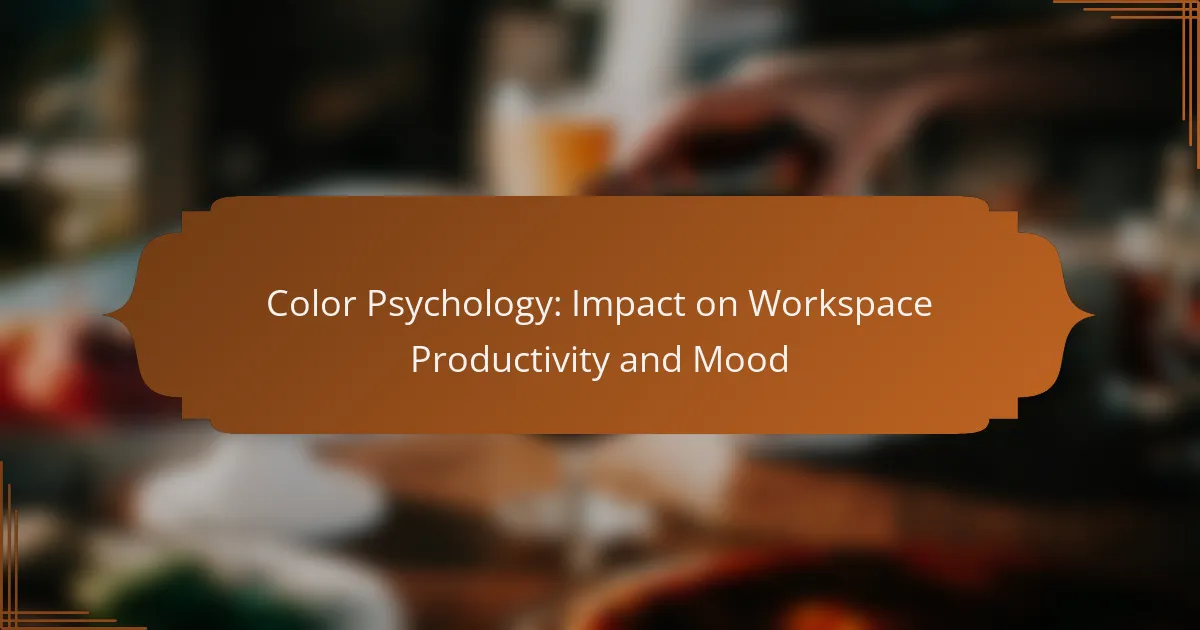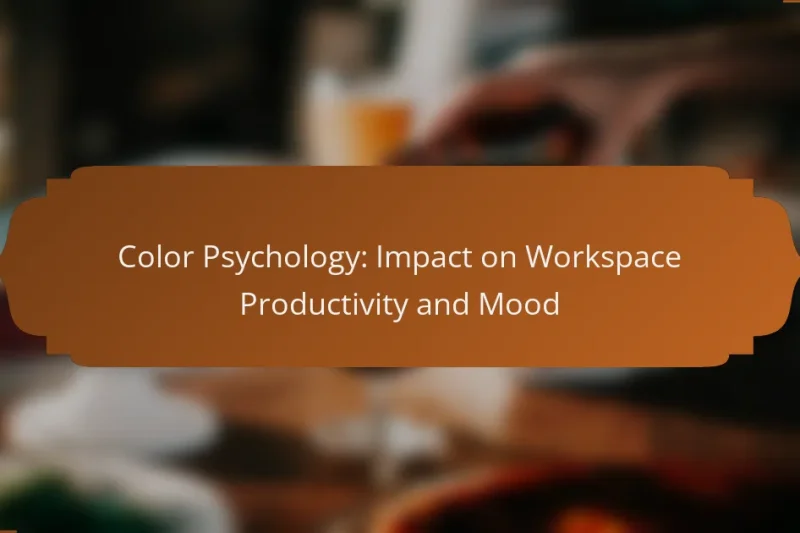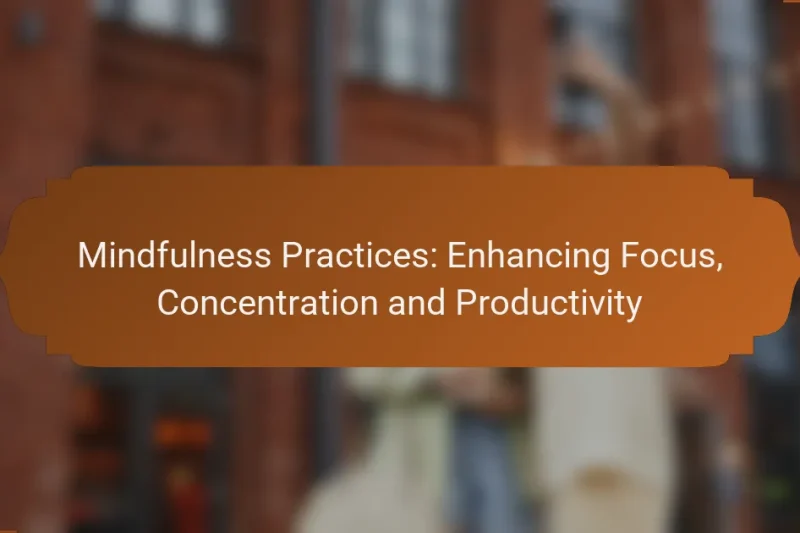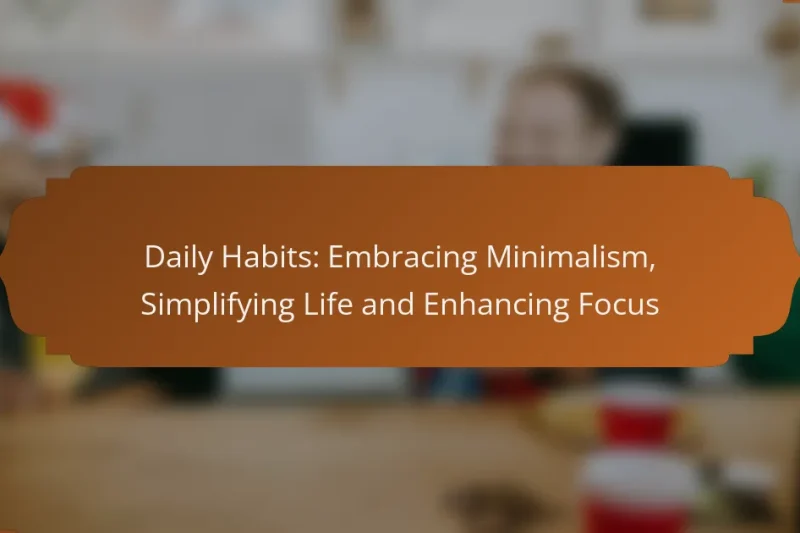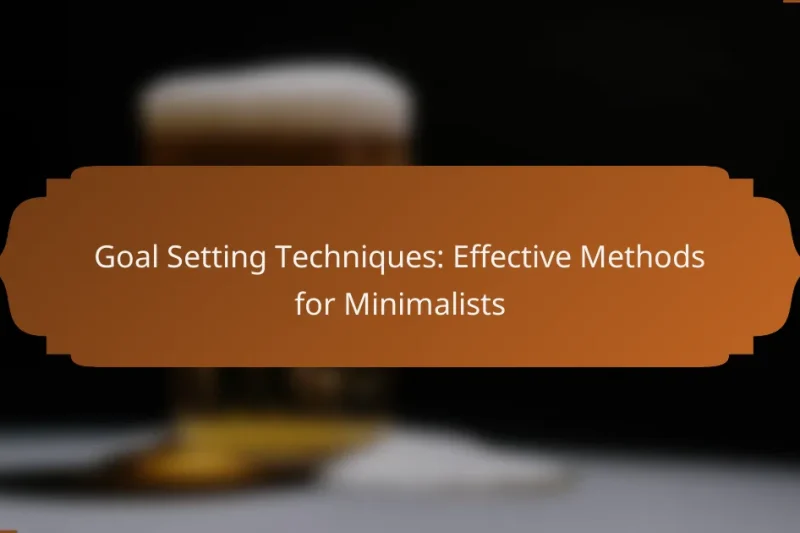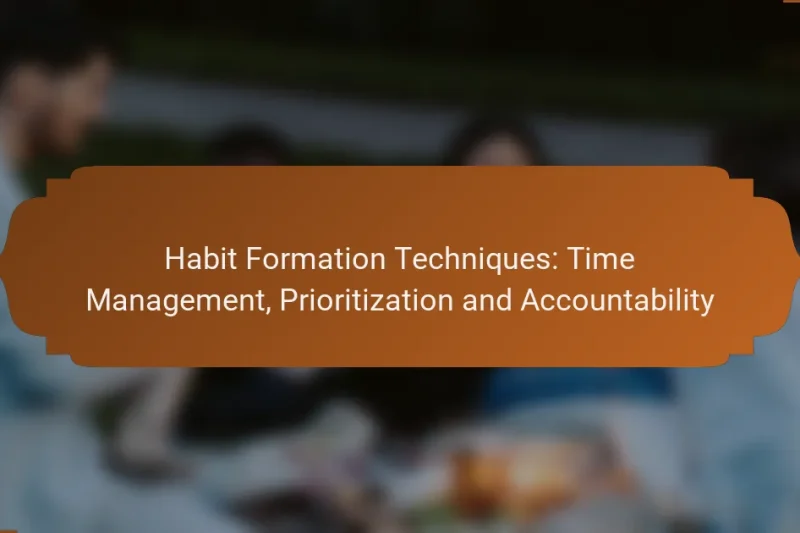Tracking progress on minimalist goals is essential for maintaining focus and motivation while simplifying the journey … Tracking Progress: Methods for Minimalist GoalsRead more
Mastering a minimalist and productivity-focused lifestyle design allows you to simplify your environment and prioritize what truly matters. By reducing distractions and clutter, you can enhance your focus and allocate mental energy to essential tasks, ultimately boosting your productivity. Embracing the right tools further streamlines your processes, making it easier to maintain this balanced approach to life.
Breaking Bad Habits: Strategies, Mindset and Clarity
Breaking bad habits requires a combination of effective strategies, a positive mindset, and clarity of purpose. … Breaking Bad Habits: Strategies, Mindset and ClarityRead more
Color Psychology: Impact on Workspace Productivity and Mood
Color plays a crucial role in shaping workspace productivity and mood by influencing emotional responses and … Color Psychology: Impact on Workspace Productivity and MoodRead more
Budget-Friendly Decluttering: Cost-Effective Solutions and Maintenance
Budget-friendly decluttering solutions focus on effective methods that minimize costs while maximizing space. By utilizing existing … Budget-Friendly Decluttering: Cost-Effective Solutions and MaintenanceRead more
Mindfulness Practices: Enhancing Focus, Concentration and Productivity
Mindfulness practices are powerful tools for enhancing focus, concentration, and productivity by training the mind to … Mindfulness Practices: Enhancing Focus, Concentration and ProductivityRead more
Daily Habits: Embracing Minimalism, Simplifying Life and Enhancing Focus
Embracing minimalism can transform daily habits by fostering a lifestyle centered around what truly matters, leading … Daily Habits: Embracing Minimalism, Simplifying Life and Enhancing FocusRead more
Ergonomic Workspace Design: Comfort, Productivity and Health Benefits
Creating an ergonomic workspace is essential for enhancing comfort, productivity, and overall health. By thoughtfully arranging … Ergonomic Workspace Design: Comfort, Productivity and Health BenefitsRead more
Goal Setting Techniques: Effective Methods for Minimalists
Goal setting techniques tailored for minimalists emphasize simplicity and clarity, helping individuals focus on what truly … Goal Setting Techniques: Effective Methods for MinimalistsRead more
Visualization Techniques: Achieving Goals through Mental Imagery
Visualization techniques are powerful tools that can significantly enhance goal achievement by fostering vivid mental images … Visualization Techniques: Achieving Goals through Mental ImageryRead more
Habit Formation Techniques: Time Management, Prioritization and Accountability
Habit formation is greatly influenced by effective time management, prioritization, and accountability. By structuring routines and … Habit Formation Techniques: Time Management, Prioritization and AccountabilityRead more
How to Implement Minimalist Lifestyle Design?
Implementing a minimalist lifestyle design involves simplifying your environment and focusing on what truly matters. This approach enhances productivity and reduces stress by eliminating distractions and excess clutter.
Declutter your living space
Start by assessing each room in your home and identifying items that you no longer use or need. A practical method is the "one-year rule": if you haven't used an item in the past year, consider letting it go. Donate, sell, or recycle these items to create a more open and inviting space.
Focus on high-traffic areas first, such as your living room and kitchen. A clean, organized space can significantly improve your mood and productivity.
Prioritize essential items
Identify the items that are truly essential to your daily life. This may include functional furniture, necessary kitchenware, and personal belongings that bring you joy. Create a list of these essentials to guide your decluttering process.
Consider using the "30-day minimalism game" where you remove one item on the first day, two on the second, and so forth. This gradual approach helps you prioritize what you genuinely need.
Adopt a capsule wardrobe
A capsule wardrobe consists of a limited number of versatile clothing pieces that can be mixed and matched. Aim for around 20-30 items that fit your lifestyle and personal style. This not only simplifies your choices but also reduces decision fatigue.
Choose quality over quantity by investing in durable, timeless pieces that can be worn in various settings. This approach can save you money in the long run and help you maintain a clutter-free closet.
Utilize digital tools for organization
Leverage digital tools like task management apps, note-taking software, and cloud storage to streamline your organization. Tools such as Trello, Evernote, or Google Drive can help you keep track of tasks and important documents without physical clutter.
Set reminders and deadlines within these tools to stay on top of your commitments. Regularly review and update your digital files to ensure they remain organized and relevant.
Establish daily routines
Creating structured daily routines can enhance your productivity and simplify decision-making. Start by outlining your morning and evening routines, incorporating essential tasks that align with your minimalist goals.
Consider using time-blocking techniques to allocate specific periods for work, relaxation, and personal projects. This helps you stay focused and minimizes distractions throughout the day.
What Are the Benefits of Minimalism for Productivity?
Minimalism enhances productivity by reducing distractions and streamlining focus. By simplifying your environment and commitments, you can allocate more mental energy to essential tasks.
Improved focus and concentration
Minimalism fosters an environment that promotes focus and concentration. By eliminating clutter, both physical and digital, you create a workspace that encourages deep work. This can lead to longer periods of uninterrupted productivity.
To achieve this, consider decluttering your workspace regularly. Aim for a clean desk policy where only essential items are present, which can significantly enhance your ability to concentrate on tasks at hand.
Reduced stress and anxiety
Adopting a minimalist lifestyle can significantly lower stress and anxiety levels. A simplified environment reduces the overwhelming feeling of having too many choices or distractions, allowing for a calmer mindset.
To minimize stress, evaluate your commitments and eliminate non-essential activities. This can free up mental space and time, leading to a more balanced and less anxious life.
Enhanced decision-making
Minimalism can lead to better decision-making by reducing the cognitive load associated with choices. With fewer distractions and commitments, you can focus on what truly matters, making it easier to weigh options and make informed decisions.
To enhance your decision-making process, limit your options in various areas of life. For example, simplify your wardrobe to a few versatile pieces, which can streamline daily choices and reduce decision fatigue.
Increased time for meaningful activities
By embracing minimalism, you can create more time for activities that bring joy and fulfillment. With fewer distractions and obligations, you can prioritize what truly matters to you, whether it's family, hobbies, or personal growth.
Consider scheduling regular time blocks for meaningful activities each week. This can help ensure that you dedicate time to what enriches your life, rather than getting lost in trivial tasks.
Which Tools Enhance Minimalist Productivity?
Several tools can significantly boost minimalist productivity by simplifying task management, organization, note-taking, and focus. Selecting the right tools helps streamline processes, reduce clutter, and enhance efficiency.
Trello for task management
Trello is a visual project management tool that uses boards, lists, and cards to organize tasks. It allows users to create a clear overview of projects, making it easy to track progress and deadlines.
To maximize Trello's effectiveness, create boards for different projects and use labels to categorize tasks. This helps maintain focus and ensures that important tasks are not overlooked.
Be cautious of overcomplicating boards with too many lists or cards. Keep it simple to avoid confusion and maintain a minimalist approach.
Notion for organization
Notion is an all-in-one workspace that combines notes, tasks, databases, and calendars. It provides a flexible platform for organizing information in a way that suits individual needs.
Utilize templates to quickly set up pages for different purposes, whether for personal projects or team collaboration. This can save time and help maintain a clean, organized space.
However, avoid the temptation to create overly complex databases or pages. Stick to essential information to keep your workspace clutter-free.
Evernote for note-taking
Evernote is a powerful note-taking application that allows users to capture ideas, documents, and images in one place. Its tagging and search features make it easy to retrieve information quickly.
To enhance productivity, regularly review and organize notes by creating notebooks for specific topics or projects. This helps maintain clarity and ensures that important notes are easily accessible.
Be mindful of syncing issues across devices; ensure that your notes are up-to-date and accessible wherever you need them. Regularly declutter your notes to keep only what is necessary.
Forest for focus
Forest is a unique app that encourages focus by allowing users to grow virtual trees while they concentrate on tasks. If you leave the app to check your phone, the tree dies, promoting sustained attention.
Set specific time blocks for focused work sessions, typically ranging from 25 to 50 minutes, to maximize productivity. This method, known as the Pomodoro Technique, can be effectively integrated with Forest.
Be aware of the potential for distraction from notifications. Consider silencing your phone or using “Do Not Disturb” mode while working to enhance your focus further.
How to Choose Minimalist Products for Your Home?
Choosing minimalist products for your home involves selecting items that serve essential purposes while promoting simplicity and functionality. Focus on quality over quantity, ensuring each product enhances your living space without cluttering it.
Evaluate product necessity
Assess whether a product is truly necessary by considering its primary function and how often you will use it. Ask yourself if it solves a specific problem or improves your daily life. If it’s something you use infrequently, it may not warrant a place in your home.
A practical approach is to apply the "one in, one out" rule: for every new item you bring in, consider removing an existing one. This helps maintain a balanced and uncluttered environment.
Consider sustainability
Sustainability is key in minimalist living. Choose products made from eco-friendly materials that have a lower environmental impact. Look for certifications like Fair Trade or organic labels to ensure ethical production practices.
Additionally, consider the product's lifespan. Investing in durable items may cost more upfront but can save money and resources in the long run, reducing waste and the need for replacements.
Research user reviews
User reviews provide valuable insights into product performance and durability. Look for feedback on platforms like Amazon or specialized review sites to gauge real-world experiences. Pay attention to comments about longevity and functionality, as these can influence your decision.
When reading reviews, focus on those that discuss similar needs to yours. This will help you determine if the product aligns with your minimalist lifestyle and meets your expectations effectively.
What Are Key Principles of Productivity Lifestyle Design?
Key principles of productivity lifestyle design focus on optimizing your time and resources to achieve personal and professional goals efficiently. This involves creating a structured approach to work and life that minimizes distractions and maximizes output.
Set clear goals
Setting clear goals is fundamental to productivity lifestyle design. Goals provide direction and a framework for measuring progress, ensuring that your efforts align with your desired outcomes.
When defining your goals, use the SMART criteria: Specific, Measurable, Achievable, Relevant, and Time-bound. For example, instead of saying "I want to get fit," specify "I will exercise for 30 minutes, five times a week for the next three months." This clarity helps maintain focus and motivation.
Regularly review and adjust your goals as needed. Life circumstances can change, and being flexible allows you to stay on track without feeling overwhelmed. Consider using tools like digital planners or goal-tracking apps to keep your objectives visible and manageable.

